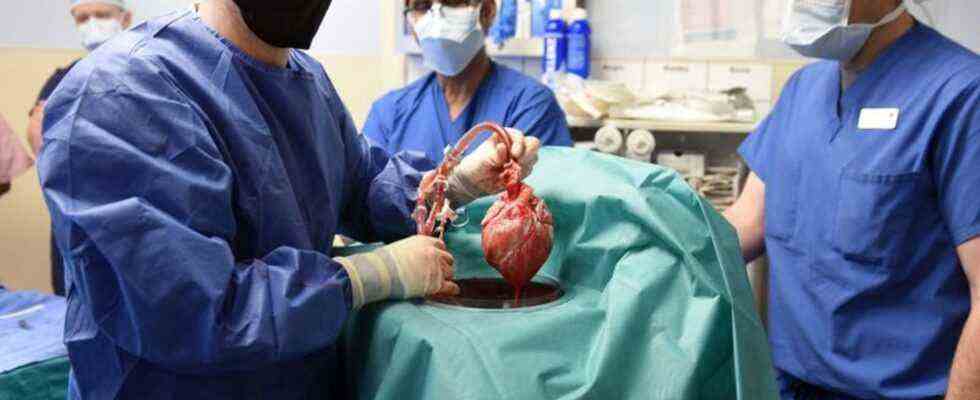medicine
First pig heart transplant for a human
The organ was used in a 57-year-old man with a life-threatening heart disease. Photo: Tom Jemski / University of Maryland School of Medicine / dpa
© dpa-infocom GmbH
A genetically modified pig heart was inserted into a human for the first time during an operation. The patient is fine. The sensational transplant gives hope.
A transplant team in the USA claims to have connected a genetically modified pig heart to a human patient for the first time.
The organ was used on Friday in a clinic in Baltimore, Maryland, in a 57-year-old man with life-threatening heart disease, the hospital announced on Monday. According to the US media, the operation lasted eight hours, the transplanted heart has since started work and the patient is fine.
“This organ transplant shows for the first time that a genetically modified animal heart can function like a human heart without the body rejecting it immediately,” said the University of Maryland Medical Center. The patient – who was classified as unsuitable for a human donor heart – will continue to be closely monitored over the coming weeks.
A choice between life and death
“This was a groundbreaking operation and brings us one step closer to solving the shortage of organs,” the doctor in charge Bartley Griffith was quoted as saying. According to the statement, the patient said that it was a matter of life and death: “I know it’s a shot in the dark, but it’s my last chance”. He is looking forward to recovering and getting out of bed again.
The high-profile transplant could provide hope for thousands of people in the United States alone who depend on donor organs. For some time now, scientists have been trying to breed organs in pigs that can be used by humans – in addition to hearts, also kidneys or lungs. With the medical breakthrough that has now been reported, however, many questions remain unanswered, especially those about the organ’s longevity. In addition, the findings have not yet been published in any specialist magazine.
Another step in xenotransplantation
In October it became known that doctors in New York had connected a pig kidney to a brain-dead person for more than two days. The organ was connected to the bloodstream outside the body for 54 hours and started to work there “almost immediately” and to form the metabolite creatinine.
At that time, experts spoke of a “further step” in the field of xenotransplantation, ie the transfer of cells or organs from one species to another. The history of the development of xenografts is long and marked by rainfall. The case of Baby Fae, who received a baboon heart in California in 1984, was particularly spectacular. It died three weeks after the operation.

